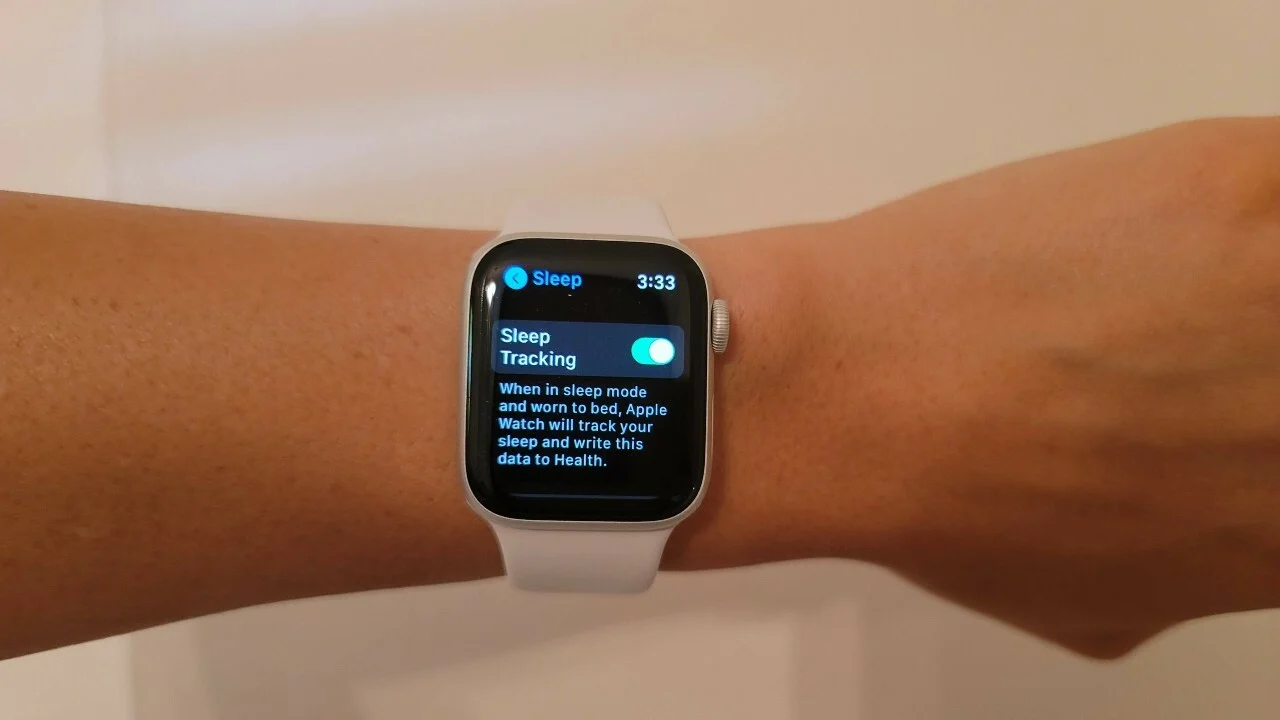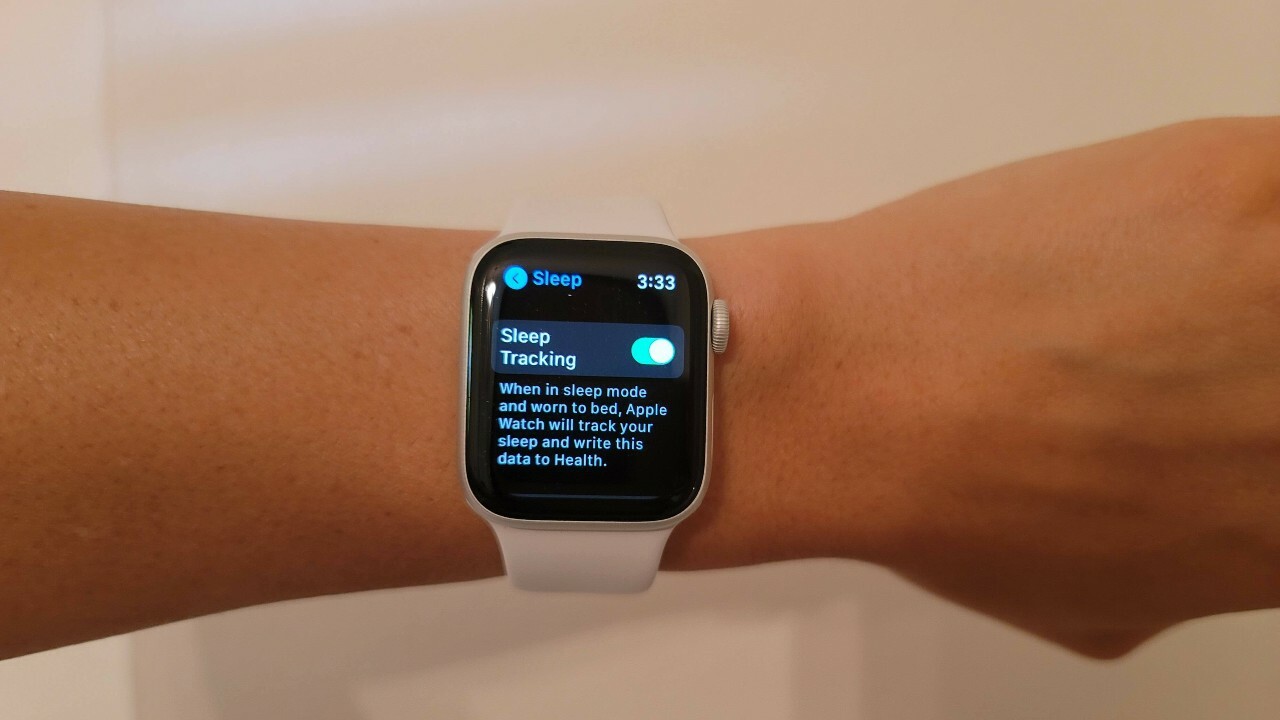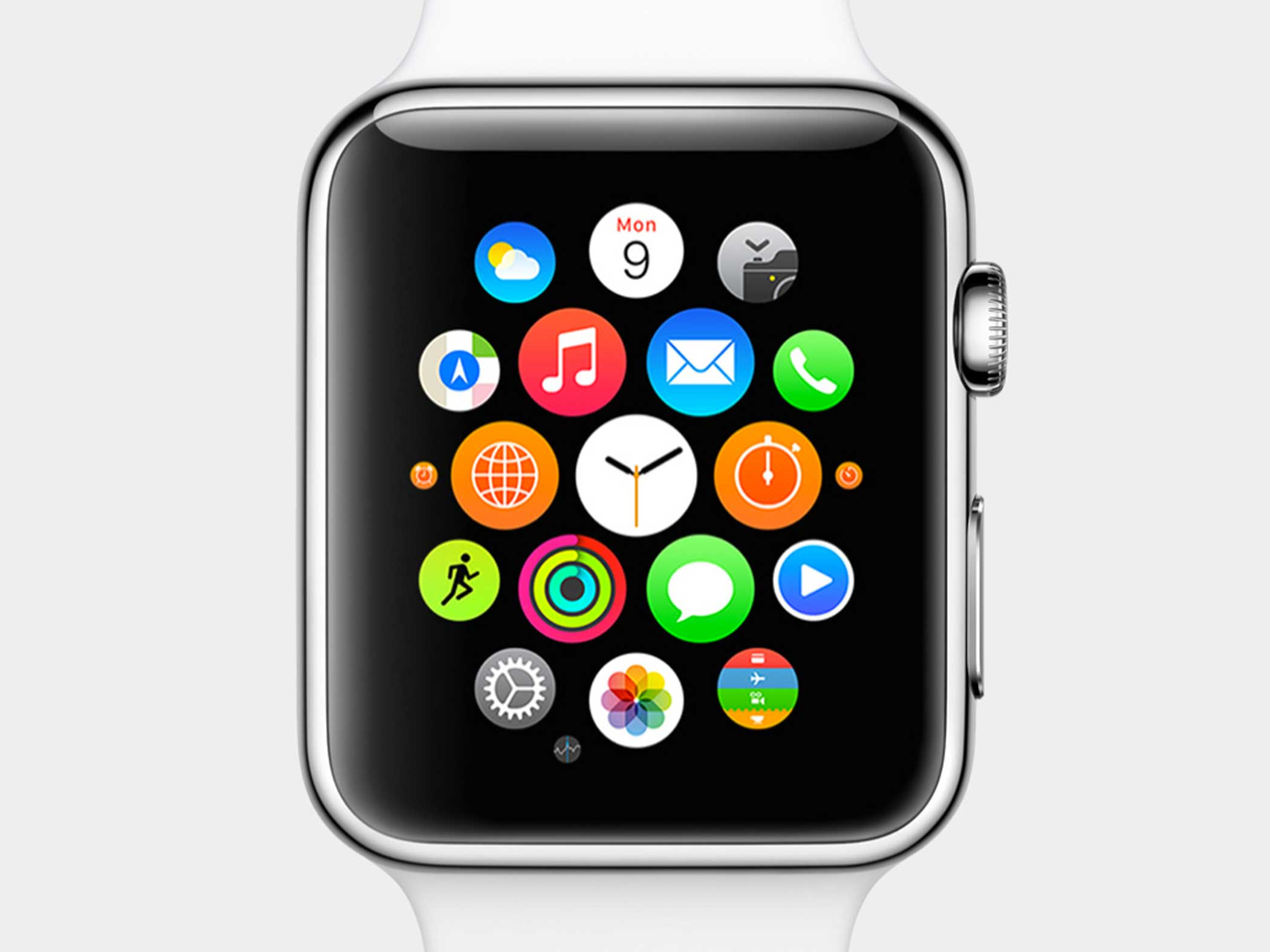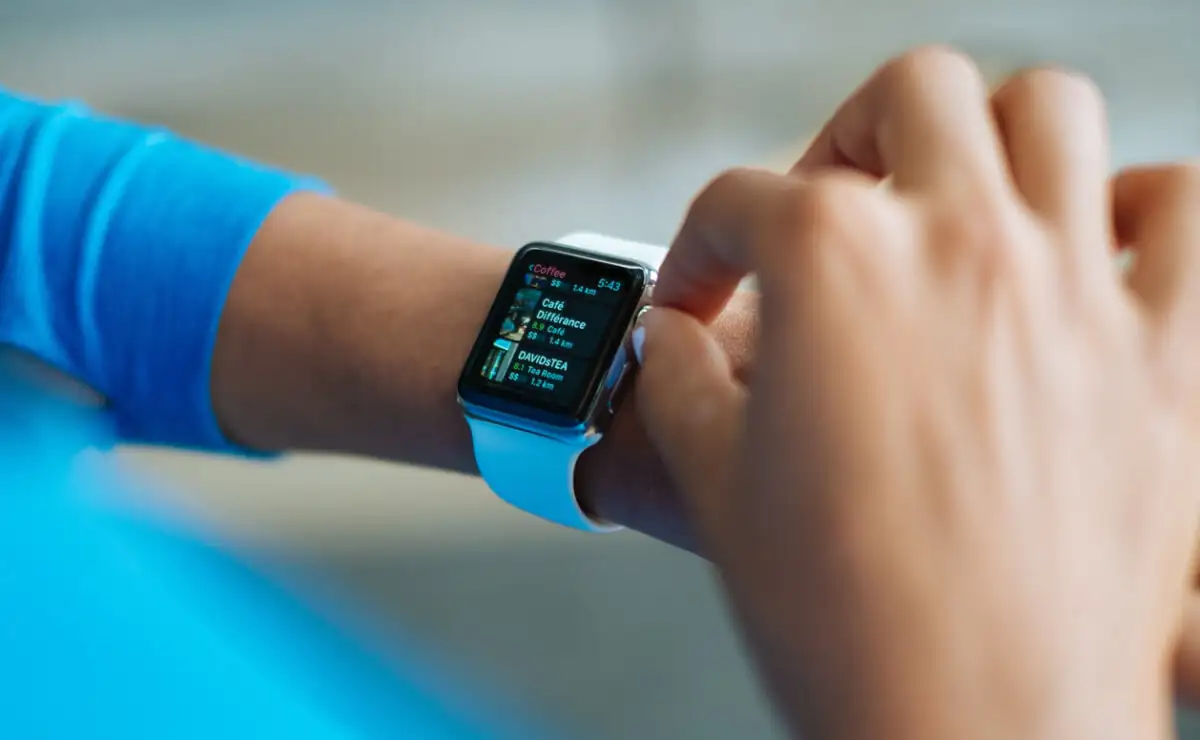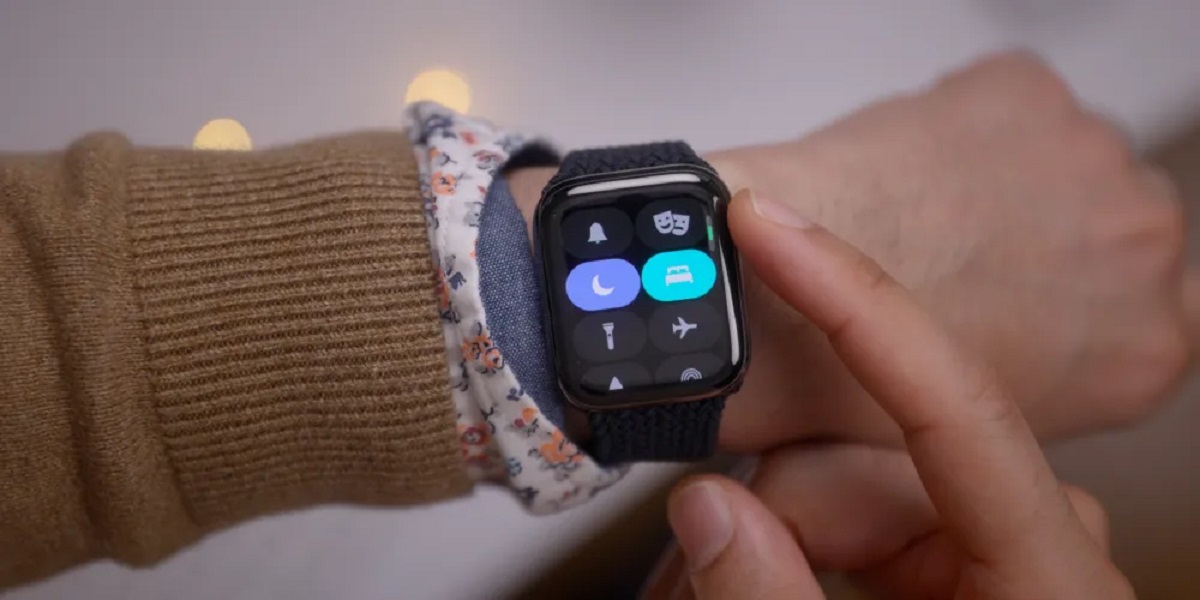Why Track Deep Sleep on Apple Watch?
Getting quality sleep is essential for overall well-being and optimal functionality. While Apple Watch is known for its tracking capabilities, it can also provide valuable insights into your sleep patterns, including deep sleep. But why is tracking deep sleep important?
Deep sleep, also known as slow-wave sleep, is a crucial stage of the sleep cycle. It is during this phase that the body repairs tissues, boosts the immune system, and consolidates memories. Deep sleep plays a vital role in restoring energy levels, enhancing cognitive function, and promoting physical recovery.
Knowing your deep sleep patterns can help you understand your sleep quality and make necessary adjustments to improve it. By tracking deep sleep on your Apple Watch, you can gain insights into the duration and efficiency of your sleep, enabling you to make lifestyle changes that promote better sleep habits.
Since deep sleep is a restorative stage of sleep, lack of sufficient deep sleep can lead to various issues, including daytime grogginess, reduced cognitive function, and increased susceptibility to illness. By monitoring deep sleep patterns over time, Apple Watch can help identify potential sleep disorders or disruptions, and provide indicators of overall sleep health.
Furthermore, tracking deep sleep on Apple Watch can be particularly beneficial for individuals looking to optimize their fitness and recovery routines. Deep sleep is when the body recovers from physical exertion, repairs muscle tissue, and releases growth hormones. By gaining insights into your deep sleep patterns, you can adjust your exercise and recovery strategies to maximize benefits.
Overall, tracking deep sleep on Apple Watch can provide valuable information about your sleep quality, alert you to potential issues, and help you make necessary lifestyle adjustments. With this knowledge, you can take proactive steps towards improving your sleep health and overall well-being.
How Does Apple Watch Track Sleep?
Apple Watch utilizes advanced sensors and algorithms to track various aspects of your sleep, including duration, quality, and different stages of sleep. The latest models, such as Apple Watch Series 6 and watchOS 7 and above, offer a dedicated Sleep app that makes sleep tracking seamless. Here’s how Apple Watch tracks sleep:
1. Sleep Detection: Apple Watch uses a combination of motion sensors, including the accelerometer and gyroscope, to detect when you’re asleep. It analyzes your movements and heart rate data to determine your sleep patterns accurately.
2. Sleep Analysis: Once in sleep mode, Apple Watch continuously monitors your heart rate, movement, and noise levels to analyze your sleep stages. It distinguishes between wake, REM, light, and deep sleep stages based on your body’s signals during the night.
3. Wind Down: Apple Watch helps you establish a bedtime routine by offering a “Wind Down” feature. This feature gradually dims your iPhone screen, activates Do Not Disturb, and prompts you with soothing sounds or guided meditations to relax and prepare for sleep.
4. Sleep Schedule: With the Sleep app on Apple Watch, you can set a sleep schedule to establish a consistent routine. It reminds you to go to bed at the desired time, and in the morning, it gently wakes you up using haptic vibrations or gentle sounds.
5. Sleep Goals: Apple Watch allows you to set sleep goals based on your preferred amount of sleep. It provides insights into whether you meet your goals and guides you in making adjustments for healthier sleep patterns.
6. Sleep Complications: Apple Watch offers sleep complications that you can add to your watch face to view sleep-related information at a glance. These complications provide a quick overview of your sleep data and help you stay on top of your sleep habits.
By harnessing the power of sensors, algorithms, and smart features, Apple Watch delivers comprehensive sleep tracking capabilities. It provides you with valuable data to analyze your sleep patterns, make informed decisions about lifestyle changes, and work towards a healthier sleep routine.
How to Enable Sleep Tracking on Apple Watch
Enabling sleep tracking on your Apple Watch is a straightforward process that can be done through the Sleep app. Follow these steps to get started:
Step 1: Update your Apple Watch and iPhone: Ensure that both your Apple Watch and iPhone are running the latest versions of their respective operating systems. The sleep tracking feature requires at least watchOS 7 or later and iOS 14 or later.
Step 2: Set up the Sleep app: On your iPhone, open the Health app and tap on the Sleep tab at the bottom. You will be prompted to set up the Sleep app. Follow the on-screen instructions to configure your sleep schedule and preferences.
Step 3: Adjust sleep goals: In the Sleep app, you can set sleep goals based on your desired amount of sleep. You can also set up a bedtime reminder to receive notifications before your scheduled sleep time.
Step 4: Enable sleep mode: To automatically enable sleep tracking on your Apple Watch, go to the Watch app on your iPhone. Tap on the My Watch tab, then go to the Sleep section. Toggle on the “Track Sleep with Apple Watch” option.
Step 5: Customize sleep options: In the Sleep section of the Watch app, you can customize additional sleep options. You can choose to enable “Sleep Mode” and configure whether you want your Apple Watch to be silent and not raise the screen overnight.
Step 6: Set sleep goal reminders: If you want to be reminded about your sleep goal progress, go to the Sleep section in the Watch app and tap on “Full Schedule & Options”. Enable the “Goal Completion Reminders” option and select the desired frequency of reminders.
Once you have enabled sleep tracking on your Apple Watch, it will automatically start tracking your sleep when you wear it to bed. The Sleep app will provide insights into your sleep duration, quality, and different sleep stages when you wake up in the morning.
By following these steps, you can take full advantage of the sleep tracking feature on your Apple Watch. Monitoring your sleep patterns can help you establish better sleep habits and improve your overall well-being.
How to View Your Sleep Data on Apple Watch
Once you have enabled sleep tracking on your Apple Watch and completed a night of sleep, you can easily access your sleep data to gain insights into your sleep patterns. Here’s how to view your sleep data:
Step 1: Wake up and unlock your Apple Watch: When you wake up in the morning, unlock your Apple Watch by entering your passcode or using Touch ID or Face ID.
Step 2: Open the Sleep app: On your Apple Watch’s home screen, locate the Sleep app – it has a crescent moon icon. Tap on the app icon to launch the Sleep app.
Step 3: Access your sleep data: In the Sleep app, you will see the summary of your sleep data for the previous night. This includes the total sleep duration, as well as details about different sleep stages, such as deep sleep, light sleep, and REM sleep.
Step 4: View sleep trends: To access more detailed sleep information, tap on the “Show More in Health” button within the Sleep app. This will open the Health app on your paired iPhone, where you can explore your sleep trends over time.
Step 5: Analyze your sleep data: In the Health app, navigate to the Sleep section to delve into your sleep data. You can view daily sleep trends, weekly summaries, and monthly sleep analysis. The app provides visual graphs that display your sleep duration, sleep quality, and the time spent in each sleep stage.
Step 6: Explore sleep insights: The Health app also offers personalized sleep insights based on your sleep data. These insights provide suggestions and tips for improving your sleep quality and achieving better sleep habits.
By regularly accessing and analyzing your sleep data on Apple Watch and the Health app, you can gain a better understanding of your sleep patterns. This information can empower you to make adjustments to your sleep routine, such as adjusting your bedtime, optimizing your sleep environment, or adopting relaxation techniques, to improve the quality and duration of your sleep.
Remember, consistent sleep tracking and analysis can help you identify trends and patterns that may impact your overall sleep health. It’s essential to take advantage of the data provided by Apple Watch to make informed decisions that contribute to better sleep and well-being.
What Does Deep Sleep Mean?
Deep sleep, also known as slow-wave sleep (SWS), is a critical stage of the sleep cycle characterized by the slowest brainwave activity. It typically occurs in the first half of the night and is vital for physical restoration, cognitive function, and overall well-being.
During deep sleep, the body undergoes various restorative processes. Here’s what deep sleep means and why it is essential:
1. Physical Restoration: Deep sleep is a time of physical recovery, where the body repairs and regenerates tissues, muscles, and organs. It is during this stage that growth hormone is released, aiding in cellular repair, muscle development, and overall physical rejuvenation.
2. Cognitive Function: Deep sleep plays a crucial role in consolidating memories and promoting optimal brain function. It aids in memory retention, learning, and information processing. Deep sleep allows the brain to sort and store information obtained during wakefulness, enhancing cognitive performance and problem-solving abilities.
3. Immune System Boost: Deep sleep strengthens the immune system, helping to fight off infections and diseases. An adequate amount of deep sleep allows the body to produce and release cytokines, which are essential proteins that help regulate immune responses and promote healing.
4. Hormone Regulation: Deep sleep is intricately linked to hormonal regulation. It helps balance hormone levels by regulating the release of various hormones, including cortisol (stress hormone), insulin (blood sugar regulation), and leptin and ghrelin (appetite regulation). Adequate deep sleep can help maintain hormonal balance, thus promoting overall wellness.
5. Refreshing Energy Levels: Deep sleep is vital for replenishing energy levels. It allows the body to rest and recharge, ensuring that you wake up feeling refreshed and alert in the morning. Deep sleep promotes a sense of rejuvenation that helps you tackle the day ahead with vigor and vitality.
Understanding the significance of deep sleep highlights the importance of tracking and optimizing your sleep quality. By monitoring your deep sleep patterns on Apple Watch, you can gain insights into the duration and efficiency of your deep sleep. This information can guide lifestyle adjustments and promote better sleep habits, ultimately improving your overall health and well-being.
How to Check Deep Sleep on Apple Watch
Apple Watch provides users with the ability to track their deep sleep patterns and gain insights into their sleep quality. To check your deep sleep on Apple Watch, follow these steps:
Step 1: Wear your Apple Watch to bed: To track your sleep, make sure you wear your Apple Watch while you sleep. It will automatically monitor your sleep patterns using its built-in sensors.
Step 2: Wake up and unlock your Apple Watch: When you wake up in the morning, unlock your Apple Watch by entering your passcode or using Touch ID or Face ID.
Step 3: Open the Sleep app: On your Apple Watch’s home screen, locate the Sleep app – it has a crescent moon icon. Tap on the app icon to launch the Sleep app.
Step 4: View your sleep data: In the Sleep app, you will see a summary of your sleep data, including the total duration of your sleep and details about your sleep stages, such as deep sleep, light sleep, and REM sleep.
Step 5: Tap on the sleep stages: To get more specific information about your deep sleep, tap on the “Sleep Analysis” section within the Sleep app. Here, you will see a breakdown of your sleep stages and the amount of time you spent in each stage.
Step 6: Check duration of deep sleep: Within the Sleep Analysis section, look for the duration of deep sleep. It will provide you with insights into the amount of time you spent in the restorative stage of sleep.
Step 7: Analyze trends over time: For a more comprehensive understanding of your deep sleep patterns, access the Health app on your iPhone. Navigate to the Sleep section, where you can explore sleep trends, view historical data, and access detailed insights into your sleep quality.
By checking your deep sleep on Apple Watch, you can monitor the quality and duration of this important stage of sleep. This information can help you adjust your sleep habits, make necessary lifestyle changes, and ultimately improve your overall sleep health.
Remember that while Apple Watch provides valuable insights into your sleep, it is not a substitute for professional medical advice. If you have concerns about your sleep or suspect a sleep disorder, it is always recommended to consult with a healthcare professional.
Tips for Improving Deep Sleep on Apple Watch
Improving the quality of your deep sleep is essential for overall well-being and optimal performance. Here are some tips to help you enhance your deep sleep while using Apple Watch:
1. Establish a consistent sleep schedule: Set a regular sleep schedule that allows for adequate time to achieve a full night’s sleep. Aim for seven to nine hours of sleep each night and try to go to bed and wake up at the same time consistently, even on weekends.
2. Create a bedtime routine: Develop a relaxing bedtime routine to signal your body that it’s time to wind down. Consider activities such as reading, taking a warm bath, practicing deep breathing, or listening to calming music. Apple Watch’s “Wind Down” feature can help you establish and stick to a bedtime routine.
3. Create a conducive sleep environment: Ensure that your bedroom is dark, quiet, and at a comfortable temperature. Consider using blackout curtains, earplugs, or a white noise machine to minimize disruptions and create a sleep-conducive environment.
4. Limit blue light exposure: Blue light emitted by electronic devices can interfere with the body’s natural sleep-wake cycle. Avoid using electronic devices, such as smartphones and tablets, before bedtime. As a helpful feature, Apple Watch has a “Night Shift” setting that reduces the blue light emitted by the screen during evening hours.
5. Stay physically active: Engage in regular physical activity to promote better sleep, including deep sleep. Apple Watch tracks your daily activity and offers various workout options to help you stay active. Aim for at least 30 minutes of moderate-intensity exercise most days of the week.
6. Practice stress management techniques: High levels of stress can interfere with deep sleep. Incorporate stress-reducing practices, such as meditation, yoga, or journaling, into your daily routine. Apple Watch provides mindfulness and meditation apps to support your stress management efforts.
7. Avoid stimulating substances before bed: Limit or eliminate the consumption of caffeine, nicotine, and alcohol, especially in the evening. These substances can disrupt sleep patterns and interfere with deep sleep.
8. Monitor and analyze your sleep data: Regularly check your sleep data on Apple Watch and the Health app to gain insights into your sleep patterns. Identify trends, notice patterns, and make adjustments based on this information to improve your deep sleep quality over time.
By implementing these tips and taking advantage of the sleep tracking capabilities of Apple Watch, you can make positive changes to your sleep routine and enhance the quality of your deep sleep. Remember that consistent efforts and a holistic approach to sleep hygiene are key to achieving optimal sleep health and overall well-being.
Conclusion
Apple Watch has transformed the way we monitor and track our sleep patterns, including the important stage of deep sleep. By enabling sleep tracking on your Apple Watch and utilizing its advanced features, you can gain valuable insights into your sleep quality, duration, and different sleep stages. This knowledge empowers you to make informed decisions about your sleep habits, leading to improved overall well-being and performance.
The ability to check your deep sleep on Apple Watch provides a convenient and accessible way to monitor this crucial sleep stage. By understanding your deep sleep patterns, you can identify areas for improvement and make necessary adjustments to optimize your sleep quality and overall sleep health.
Incorporating tips such as establishing consistent sleep schedules, creating relaxing bedtime routines, optimizing your sleep environment, and practicing stress management techniques can further enhance your deep sleep while using Apple Watch. By consistently monitoring and analyzing your sleep data, you can track your progress and make ongoing adjustments for better sleep habits and overall health.
Remember, while Apple Watch provides valuable insights into your sleep, it is important to prioritize your individual sleep needs and consult with a healthcare professional if you suspect any sleep disorders or have specific concerns.
Incorporating the power of Apple Watch’s sleep tracking capabilities into your daily routine is a step towards improving your sleep quality and overall well-being. Seize the opportunity to optimize your deep sleep and unlock the benefits of restorative rest with the help of Apple Watch.







